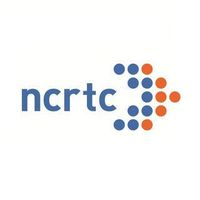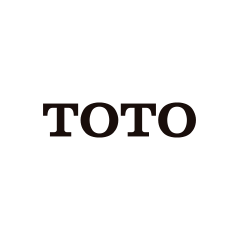A New Era in Urban Transport: Unified QR Ticketing and RRTS Integration in Delhi
August 28, 2024, 8:06 pm
In the bustling heart of India, where millions navigate the urban jungle daily, two significant developments are set to reshape the transportation landscape. The National Capital Region Transport Corporation (NCRTC) and the Delhi Metro Rail Corporation (DMRC) have joined forces to introduce a unified QR ticketing system. This initiative promises to streamline travel across the sprawling Delhi-NCR region. Meanwhile, the Sarai Kale Khan Rapid Rail Transit System (RRTS) station is poised to alleviate congestion at the busy Hazrat Nizamuddin area. Together, these projects represent a leap toward modern, efficient urban transport.
The unified QR ticketing system is a game-changer. Imagine a single code that opens the door to multiple transport modes. Commuters can now travel seamlessly between NCRTC and DMRC networks without fumbling for different tickets. This innovation aims to simplify fare collection and reduce wait times. In a city where every minute counts, this could mean the difference between catching a train or missing it.
The collaboration between NCRTC and DMRC is not just about technology; it’s about vision. Both organizations are committed to enhancing public transportation infrastructure. The QR system reflects a broader ambition to modernize urban transport, catering to the needs of a growing population. As cities expand, so do the challenges of commuting. This initiative is a step toward a solution.
But the QR ticketing system is just one piece of the puzzle. The Sarai Kale Khan RRTS station is another vital component in the quest for efficient urban transport. This station is strategically located near several transport hubs, including the Hazrat Nizamuddin Railway Station and the Pink Line Metro station. The design includes a dedicated pick-up and drop-off zone for 40 vehicles and parking for 15 buses. This is not just a station; it’s a transport nexus.
The Sarai Kale Khan station will feature segregated pathways, allowing passengers to enter without encountering motor vehicles. This is a crucial safety measure. Commuters often face chaotic conditions when switching between transport modes. The new design aims to eliminate these hazards, creating a user-friendly environment. With dedicated areas for buses and taxis, the station will reduce traffic disruptions and enhance passenger safety.
The scale of the Sarai Kale Khan station is impressive. Measuring 215 meters in length and 50 meters in width, it will feature 14 lifts and 18 escalators. A footbridge with six travelators will connect the RRTS station to the nearby railway station. This infrastructure is designed to accommodate a large number of passengers, ensuring smooth transitions between different modes of transport.
As the city grows, so does the need for efficient transport solutions. The Sarai Kale Khan station is part of the 82-kilometer Delhi-Ghaziabad-Meerut RRTS corridor. It will also serve as an interchange for two additional planned RRTS lines. This multi-modal integration plan is a forward-thinking approach to urban transport, ensuring that commuters can navigate the city with ease.
Both the unified QR ticketing system and the Sarai Kale Khan RRTS station reflect a commitment to modernizing urban transport in India. These initiatives are not just about convenience; they are about enhancing the quality of life for millions. As urbanization continues to rise, the demand for efficient transport solutions will only grow.
The collaboration between NCRTC and DMRC is a testament to the power of partnership. By working together, these organizations are setting a precedent for future transport projects. The unified QR ticketing system is a model for other cities grappling with similar challenges. It demonstrates that innovation can emerge from collaboration.
In conclusion, the developments in Delhi’s transport infrastructure signal a new era. The unified QR ticketing system and the Sarai Kale Khan RRTS station are more than just projects; they are symbols of progress. As these initiatives roll out, they will undoubtedly transform the commuting experience for millions. The future of urban transport in India is bright, and it starts with these bold steps toward modernization.
In a world where time is precious, these innovations promise to make every journey smoother, safer, and more efficient. The urban landscape is changing, and with it, the way we move through it. Welcome to the future of transport in Delhi.
The unified QR ticketing system is a game-changer. Imagine a single code that opens the door to multiple transport modes. Commuters can now travel seamlessly between NCRTC and DMRC networks without fumbling for different tickets. This innovation aims to simplify fare collection and reduce wait times. In a city where every minute counts, this could mean the difference between catching a train or missing it.
The collaboration between NCRTC and DMRC is not just about technology; it’s about vision. Both organizations are committed to enhancing public transportation infrastructure. The QR system reflects a broader ambition to modernize urban transport, catering to the needs of a growing population. As cities expand, so do the challenges of commuting. This initiative is a step toward a solution.
But the QR ticketing system is just one piece of the puzzle. The Sarai Kale Khan RRTS station is another vital component in the quest for efficient urban transport. This station is strategically located near several transport hubs, including the Hazrat Nizamuddin Railway Station and the Pink Line Metro station. The design includes a dedicated pick-up and drop-off zone for 40 vehicles and parking for 15 buses. This is not just a station; it’s a transport nexus.
The Sarai Kale Khan station will feature segregated pathways, allowing passengers to enter without encountering motor vehicles. This is a crucial safety measure. Commuters often face chaotic conditions when switching between transport modes. The new design aims to eliminate these hazards, creating a user-friendly environment. With dedicated areas for buses and taxis, the station will reduce traffic disruptions and enhance passenger safety.
The scale of the Sarai Kale Khan station is impressive. Measuring 215 meters in length and 50 meters in width, it will feature 14 lifts and 18 escalators. A footbridge with six travelators will connect the RRTS station to the nearby railway station. This infrastructure is designed to accommodate a large number of passengers, ensuring smooth transitions between different modes of transport.
As the city grows, so does the need for efficient transport solutions. The Sarai Kale Khan station is part of the 82-kilometer Delhi-Ghaziabad-Meerut RRTS corridor. It will also serve as an interchange for two additional planned RRTS lines. This multi-modal integration plan is a forward-thinking approach to urban transport, ensuring that commuters can navigate the city with ease.
Both the unified QR ticketing system and the Sarai Kale Khan RRTS station reflect a commitment to modernizing urban transport in India. These initiatives are not just about convenience; they are about enhancing the quality of life for millions. As urbanization continues to rise, the demand for efficient transport solutions will only grow.
The collaboration between NCRTC and DMRC is a testament to the power of partnership. By working together, these organizations are setting a precedent for future transport projects. The unified QR ticketing system is a model for other cities grappling with similar challenges. It demonstrates that innovation can emerge from collaboration.
In conclusion, the developments in Delhi’s transport infrastructure signal a new era. The unified QR ticketing system and the Sarai Kale Khan RRTS station are more than just projects; they are symbols of progress. As these initiatives roll out, they will undoubtedly transform the commuting experience for millions. The future of urban transport in India is bright, and it starts with these bold steps toward modernization.
In a world where time is precious, these innovations promise to make every journey smoother, safer, and more efficient. The urban landscape is changing, and with it, the way we move through it. Welcome to the future of transport in Delhi.

